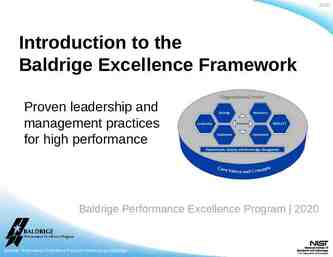An Introduction to Instructional Design Online Learning Institute Mary
14 Slides96.00 KB
An Introduction to Instructional Design Online Learning Institute Mary Ellen Bornak Instructional Designer Bucks County Community College
What is Instructional Design? A systematic process For analyzing, developing, designing, implementing, and evaluating instructional materials and activities A formal discipline that focuses on Research and theory about instructional strategies The process for developing and implementing these strategies
Instructional Systems Design Model – “ADDIE” Phase 1 – Analyze Phase 2 – Design Phase 3 – Develop Phase 4 – Implement Phase 5 – Evaluate Revise as necessary
Phase 1 -- Analyze Course Content Material described in the syllabus Skills or competencies involved Outcomes expected Teaching/Learning Interface Presentation Interaction Assessment
Phase 1 – Analyze Specific Outcomes: How will you know that students achieve course outcomes Knowledge, judgment, synthesis, performance that accomplish course goals Did they learned what you wanted them to learn? Assessment should be based on outcomes
Phase 2 -- Design Plan a strategy for developing instruction Strategy is based on the information collected in Analysis Define the course objectives Detailed, clear descriptions of what the learner will be able to do Measurable Observable
Phase 2 – Design Identify the tasks that the student should be able to perform prior to instruction Is a tutorial or refresher needed? Design a course sequence and structure Is the knowledge learned in sequential blocks, does it need to be linear? Is the content complex - requiring demonstration? Will pre-tests, unit post-tests, and end-of-course tests reinforce learning?
Phase 3 -- Development Structure content delivery On Analysis and Design phases Select the course delivery method WebCT
Phase 3 -- Development Identify the media that will be used Books Internet Video CD-ROMs Data bases
Phase 3 -- Development Identify learner activities Augment direct instruction Use discovery, active, guided learning Build in peer interaction Overriding goal - student success Purpose course structure, content, activities, and assessment to that goal
Phase 4 -- Implementation Pathway Process Do materials adequately present the content? Do activities apply new knowledge to real-life? Opportunity for collaboration, interaction? Support Is the navigation clear? Are tutorials necessary? Is practice offered to master objectives? Communication Teacher presence Peer Interaction
Phase 5 -- Evaluation Measures the effectiveness of instruction Formative evaluation Takes place during course delivery Purposed to support knowledge acquisition before summative evaluation. Summative evaluation assesses the overall effectiveness of course instruction and delivery
Revision Why and How? Constant tending brings constant improvement Use formative and summative evaluations to pinpoint weaknesses Use student feedback, successes and failures Revision insures success Revision is not a negative It is a positive step to meet student needs Each revision will reflect improvement.
An Introduction to Instructional Design Online Learning Institute Mary Ellen Bornak Instructional Designer Bucks County Community College



















